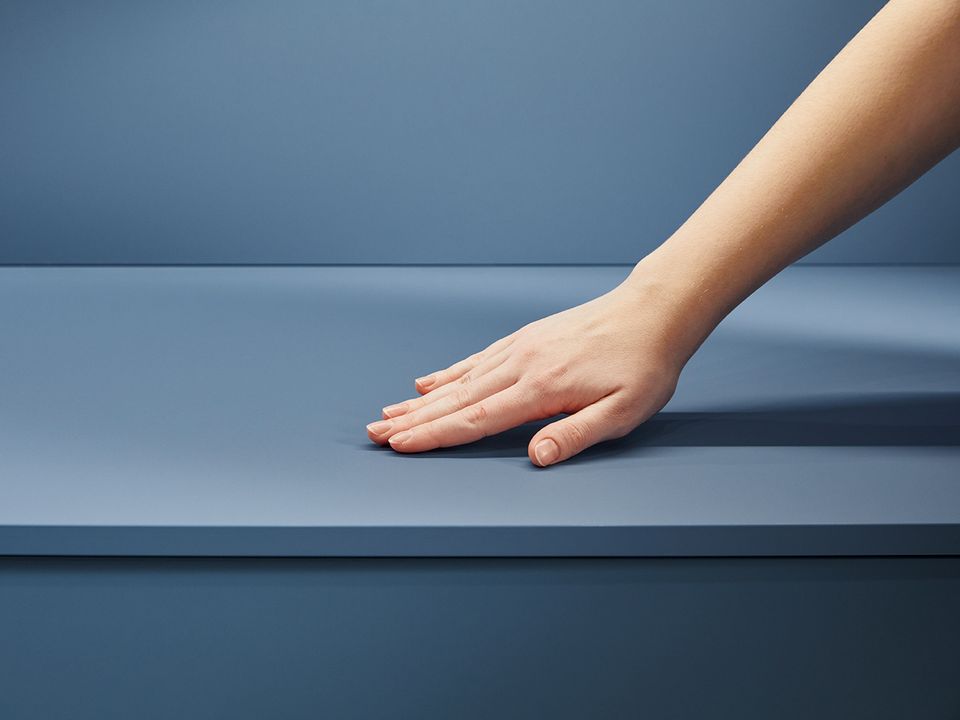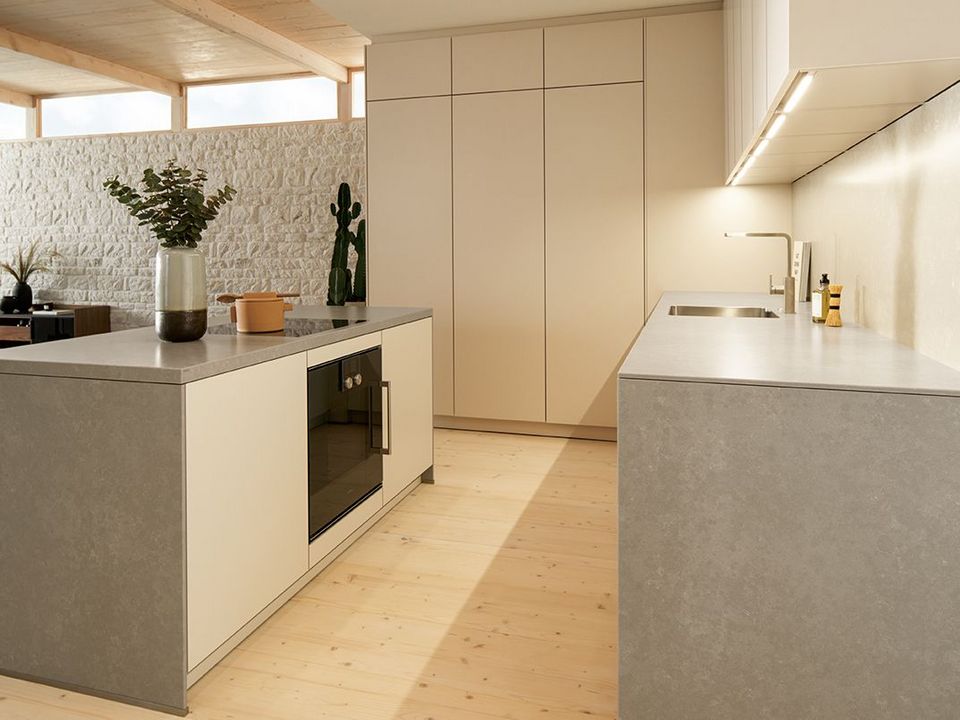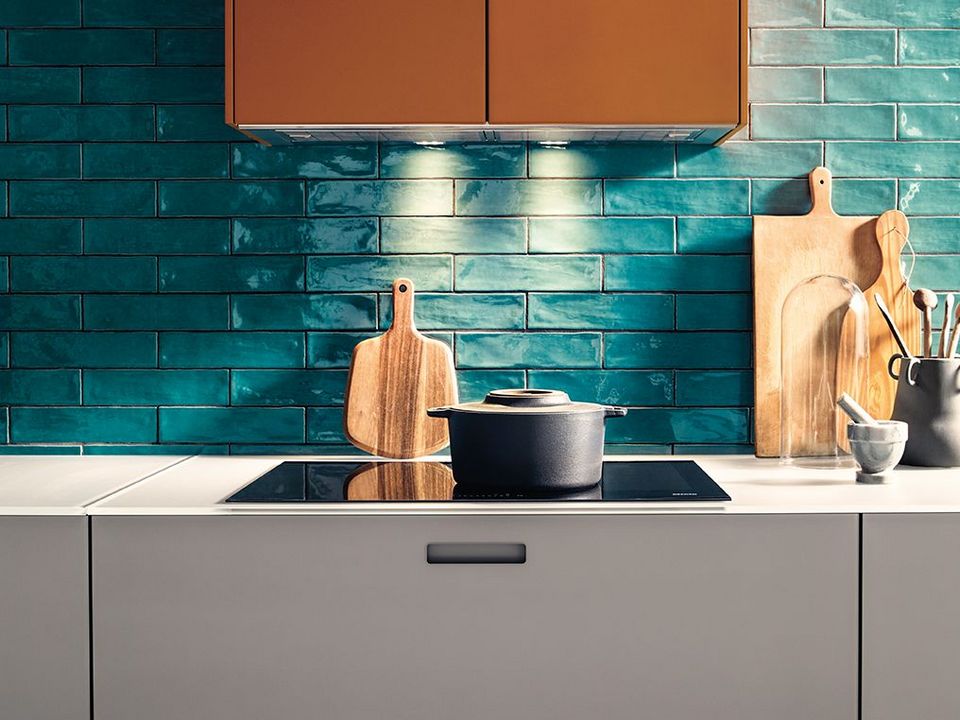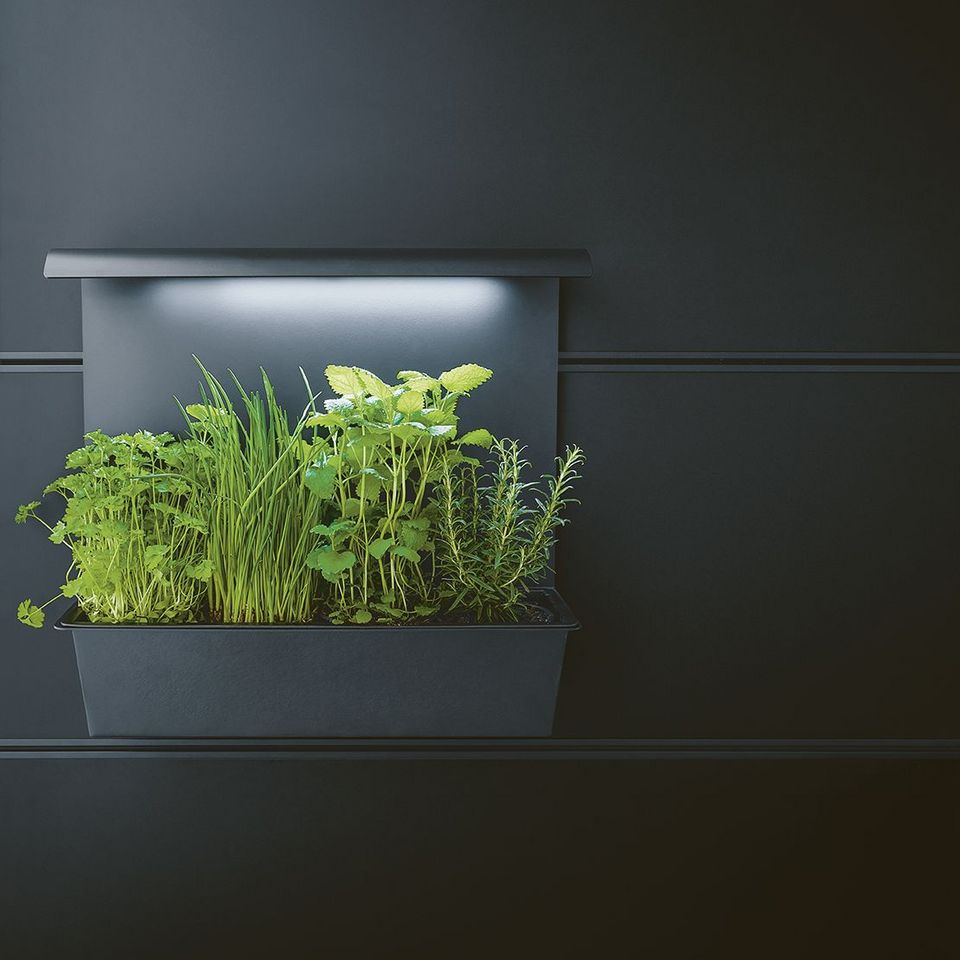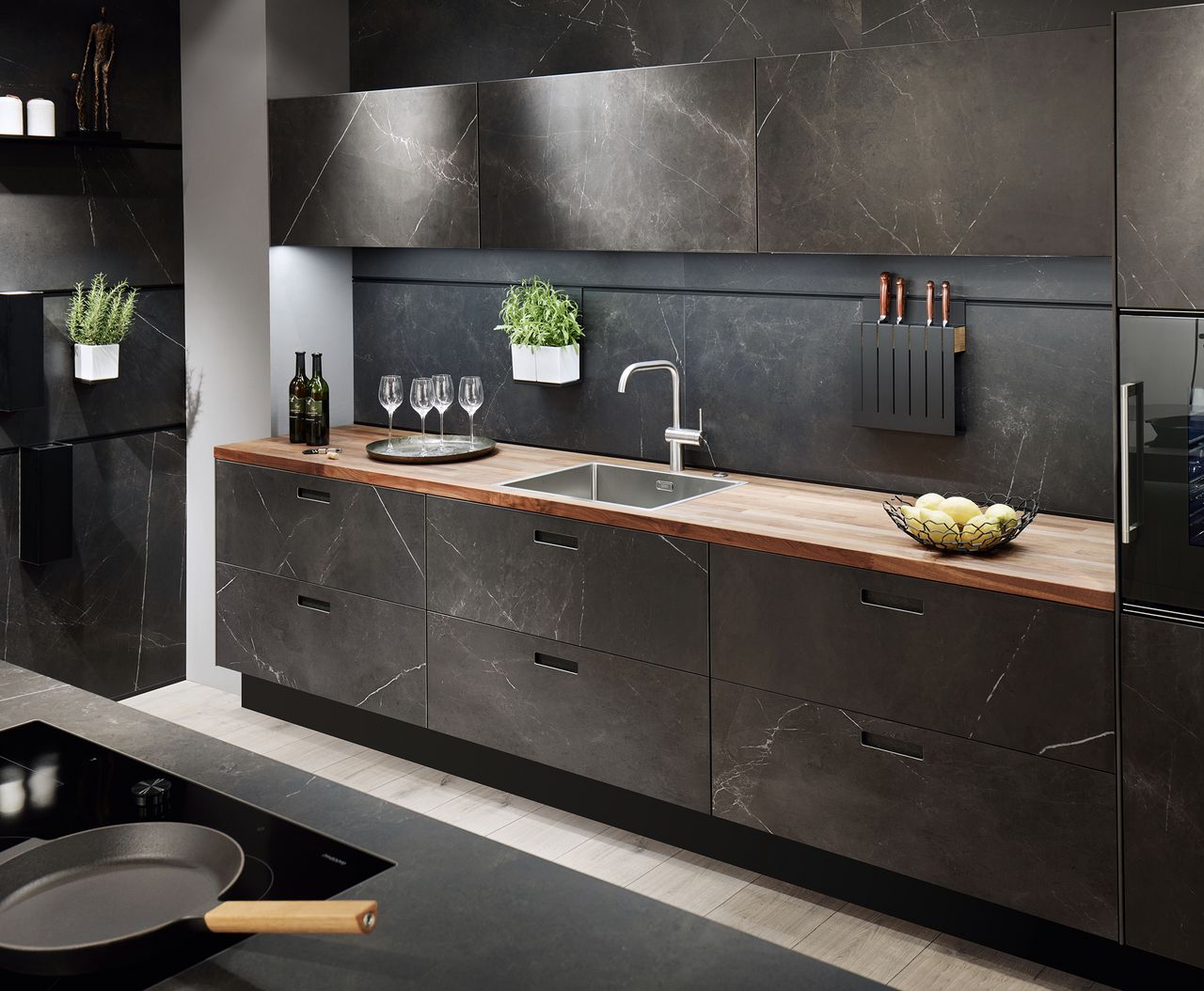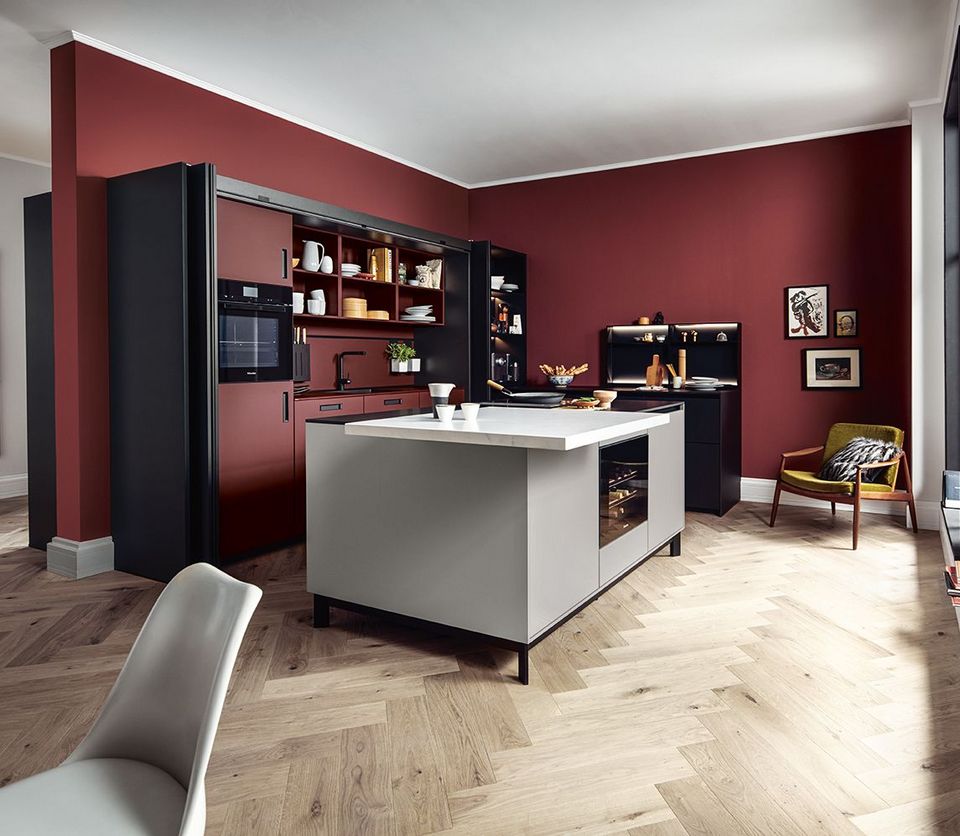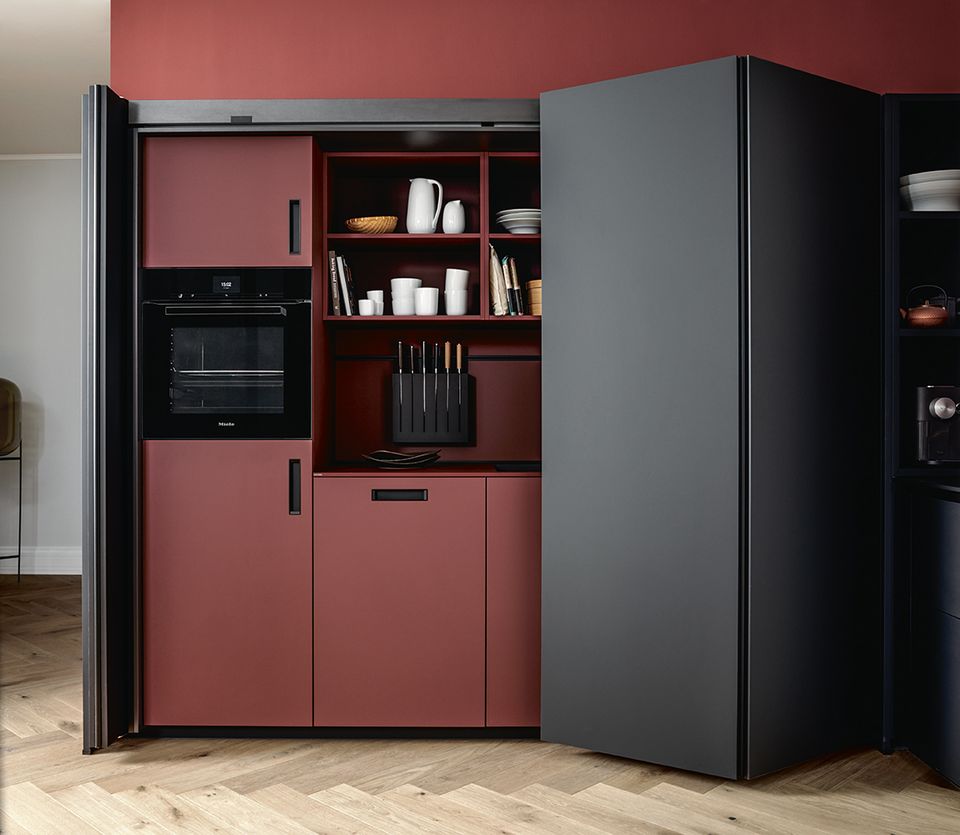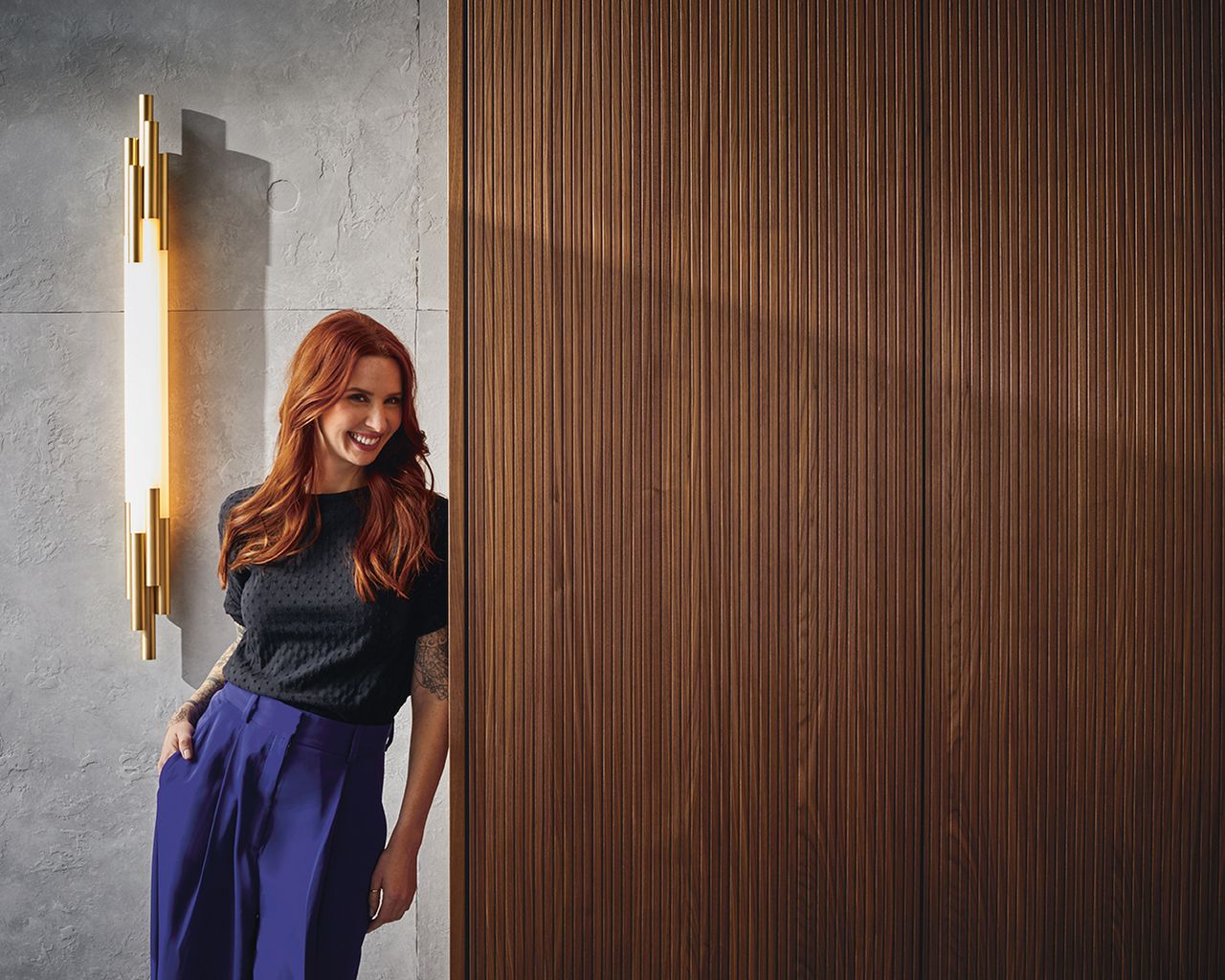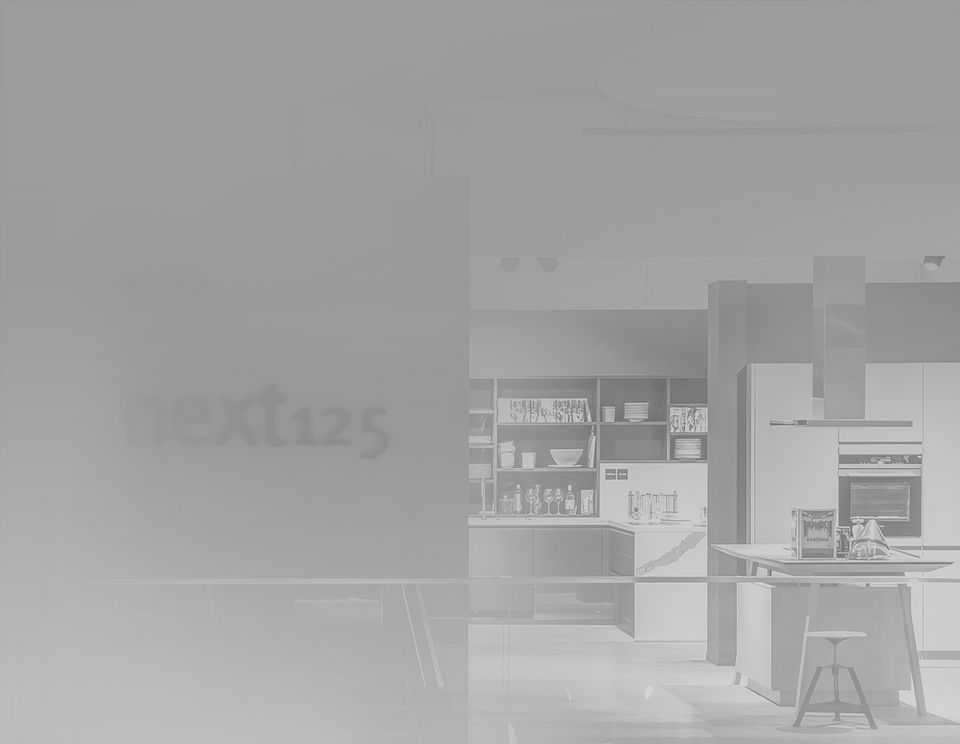
12.5 Questions with Thomas Pfister
An interview with next125’s head of design on colours, materials, lighting and more.
How do you find the right colour or material? Thomas Pfister reveals how a kitchen is transformed into an experience and what you need to bear in mind to achieve a successful kitchen design.
#1 HOW DO YOU FIND THE RIGHT COLOUR AND MATERIAL?
Thomas Pfister: Ask yourself how much colour you want, if any. If you’re unsure, I recommend getting a sample in this shade and looking at it at different times of the day and in different lights at home.
Colourful and colour-coordinated – nx510 matt velvet lacquer fronts in azure blue, combined with a matching Systemo SensiQ worktop.
#2 WHAT IS YOUR ADVICE FOR PEOPLE WHO ARE SCEPTICAL ABOUT COLOUR?
Thomas Pfister: Keep the kitchen more subtle and add colour to the room through accessories or walls; if in doubt, it’s quicker and easier to paint a wall or update the decor than replace an entire kitchen.
#3 WHAT SHOULD I DO IF I WANT TO COMBINE SEVERAL COLOURS?
Thomas Pfister: Choose a dominant colour, then accent colours. Or think in blocks: the kitchen island in one colour, the tall units in another. If you’re unsure, you can test how it would look beforehand with a visualisation.
Achieve a skilful play of colours – by combining a dominant colour with accent colours, thinking in blocks of colour or adding colourful decor.
#4 WHAT ELSE DO YOU NEED FOR A SUCCESSFUL KITCHEN DESIGN?
Thomas Pfister: A well-lit workspace with functional lighting. Ideally, dimmable lighting to add a different feel to the room after you’ve finished cooking, perhaps through the colour temperature too. The end of the day feels very different with warm lighting, particularly in the kitchen, where, in my experience, parties and family gatherings tend to end.
#5 WHAT KIND OF LIGHTING SHOULD I IDEALLY INCLUDE?
Thomas Pfister: A work light that comes from above or in front; then accent lighting above plinths, grip ledges, the undersides of wall units or rear panels.
Give light some leeway – to create a special atmosphere or play a functional role.
Lighting
More than just light or dark: Light can play a key role when the function of the kitchen transitions from work to pleasure.
#6 HOW DO YOU BRING AESTHETICS INTO PLAY IN SMALL SPACES?
Thomas Pfister: Focus on the essentials. Work on one side of the room with floor-to-ceiling furniture, and let the other side breathe for a clearer sense of space.
#7 WHAT SHOULD YOU KEEP IN MIND WITH OPEN, SPACIOUS LAYOUTS?
Thomas Pfister: Divide the functional areas into zones; from the rear units, kitchen island and tall units, through to the table and benches. Use a bar as a transition into the living area.
#8 WHAT PART OF THE KITCHEN DO YOU GET PARTICULARLY EXCITED ABOUT?
Thomas Pfister: The worktop and everything above on the wall behind, like an open shelving system. So the workspace where you prepare, cook and clean up. Open areas reveal a lot about people.
#9 WHAT ARE THE CLASSIC MISTAKES WHEN PLANNING A KITCHEN?
Thomas Pfister: Wanting too much when you’ll hardly use it, and therefore sacrificing precious workspace. In general, you should factor in transitions and space between the hob and the sink area.
next125 Pocketsystem – The interior can be designed to create colour contrasts with the exterior.
Pocketsystem
A cupboard that is a master at hide and seek: When closed it looks like household furniture; when opened it reveals its full functionality.
#11 WHAT DOES YOUR OWN KITCHEN LOOK LIKE?
Thomas Pfister: Pretty plain (laughs). Base units, a floating shelf made of solid wood. And a block of tall units that houses everything from the
fridge to the oven.
#12 HOW IMPORTANT IS DESIGN FOR YOU PERSONALLY?
Thomas Pfister: I’m a design-conscious person. To me, it goes far beyond product design. The kitchen shouldn’t be seen as separate from the room it’s going to be a part of. For a kitchen to function, you also need to know what effect light, for example, will have. I’d say I like it best when form and material are in harmony. And good architecture.
AND WHAT ELSE INTERESTS US
A kitchen should absolutely ...
Thomas Pfister: ... be a next125 kitchen (laughs). In all seriousness, it needs to function, and ideally you should still like it after many years. Everything needs to flow. And it needs to appeal to your emotions. Generally speaking, it should reflect its user.


